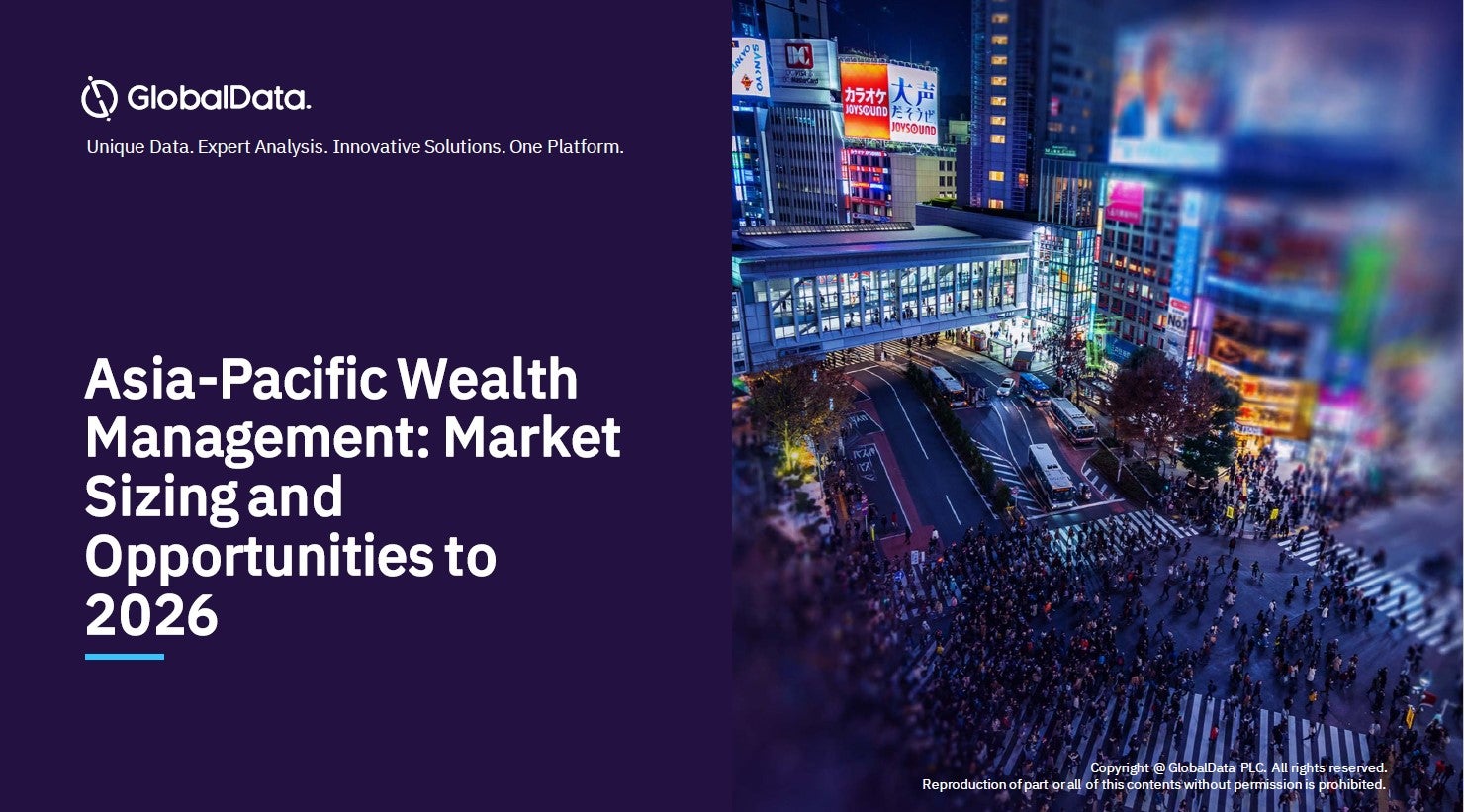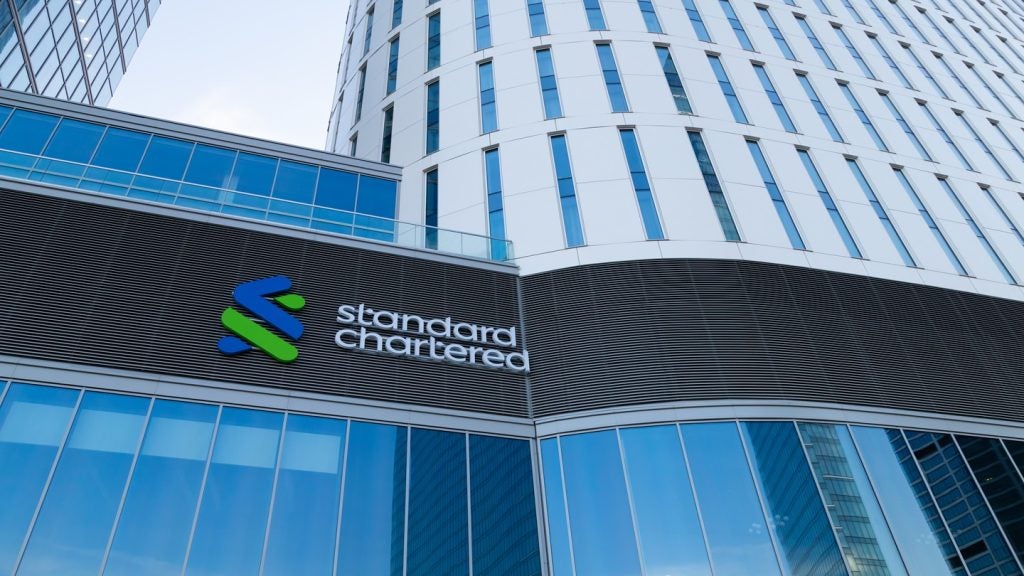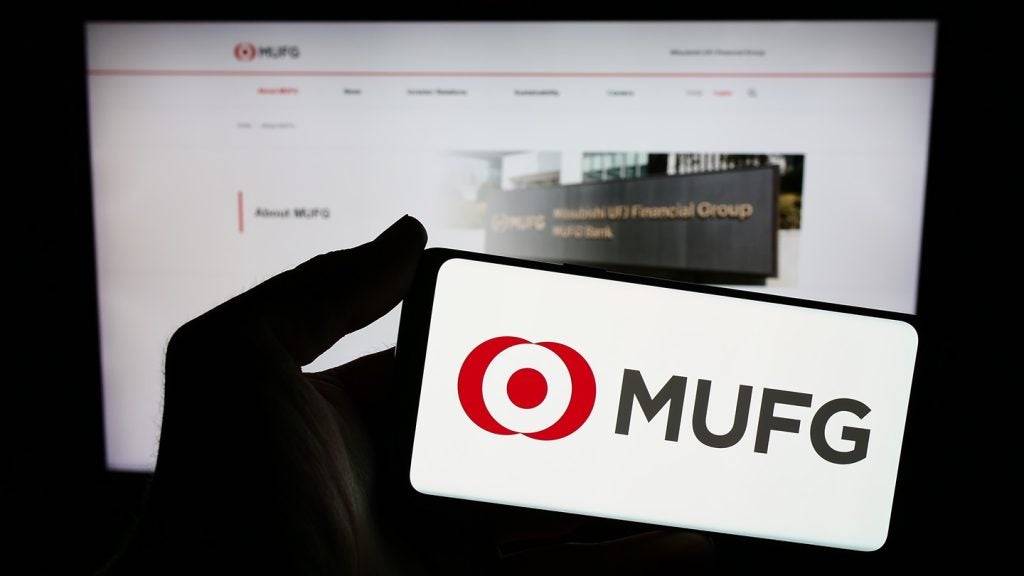continue to absorb the fallout from the US subprime mortgage
crisis, wealthy clients can be forgiven for turning to the artsy
set for financial inspiration, even though fine art itself is
looking a little shaky. Charles Davis
reports. While the slowing US economy has shown signs of
undermining the market for multimillion dollar paintings and
sculptures of late, the art market will continue to provide one of
the alternative investments with the greatest upside for the
foreseeable future, art advisors assert.
How well do you really know your competitors?
Access the most comprehensive Company Profiles on the market, powered by GlobalData. Save hours of research. Gain competitive edge.

Thank you!
Your download email will arrive shortly
Not ready to buy yet? Download a free sample
We are confident about the unique quality of our Company Profiles. However, we want you to make the most beneficial decision for your business, so we offer a free sample that you can download by submitting the below form
By GlobalDataRecent news from the art world has been somewhat troubling, giving
rise to predictions that the boom may be drawing to a close. The
doomsday scenarios follows concerns that prices have been overblown
for several pieces, including Vincent van Gogh’s ‘Wheat Fields’
which failed to reach the undisclosed reserve price at a recent
Sotheby’s auction, according to specialist investment group Fine
Art Management Services, one of several players that have emerged
to connect artists, collectors and investors. While Sotheby’s
managed to auction works totalling £128 million ($160 million) at
the recent auction, it did not reach its target of £191 million.
However, Christie’s, Sotheby’s main rival, fared better at its sale
of Impressionist art, which managed to beat its estimate, before
commission.
Possible peak in prices
The poor auction results suggest that the 11-year surge in art
prices may have peaked, perhaps because of losses sustained in
other asset classes as a consequence of the troubles afflicting US
credit markets, which are being blamed for a global economic
downturn.
It’s important to maintain a bit of perspective, according to Fine
Art Management, which notes that with more than 20,000 contemporary
artists in the world and hundreds, if not thousands, of classic
works still coming onto the market from time to time, the art
investment world closely resembles a stock market where some works
are overvalued while some are undervalued.
Art can represent a major investment on the balance sheet for
private clients and provides a new and unique opportunity for
private banks. For years, banks didn’t recognise art as an asset
class at all. But the recent emergence of art investment funds has
altered their way of thinking about art and other exotic investment
opportunities.
That market had been hot until the latest round of auctions, which
attracted a great deal of attention, given the economic uncertainty
roiling the markets and the high-profile paintings which served as
a highly visible, if imperfect, barometer. In the first six months
of the year, Sotheby’s sold $2.9 billion of art at auctions, plus
private transactions of $334 million. Christie’s sold $3.2 billion
of art and collectables at auctions in the first half, and handled
$161 million of private transactions.
Much of the excitement surrounding the art market comes from its
relative lack of history. Although still in its infancy, art is
more and more an accepted asset class. Exploding global wealth,
particularly from developing countries, and the quest for
investments that don’t mimic equity and bond markets are the main
drivers for the growing investment in fine art.
Art index
Michael Moses, a professor at New York University and the
co-founder of the Mei Moses art index, has constructed a way of
examining the composite of annual auction prices for four
collecting categories – Old Master and 19th century, Impressionist
and modern, American before 1950, and postwar and contemporary. The
index, which includes the four categories, posted a gain of 21
percent in the first half of the year, compared to 14 percent for
the S&P 500. From July 2006 to July 2007, it returned 13
percent, compared to 20 percent for the S&P 500.
The Mei Moses indexes, like the Case-Shiller Home Price Indexes
that are used for the housing derivatives market, are based on
repeat transactions – that is, on paintings, or houses, that have
sold more than once. But the Mei Moses indexes are based only on
auction results, not on the equal or larger number of private
sales.
Funds like the Mei Moses bring order to what was once a purely ad
hoc market, allowing would-be investors to better gauge risk and
compare art investments with other alternative investment classes.
In an era of wild rides in the traditional equities markets, art
looks better and better.
One key selling point is that returns from art generally boast a
zero to slightly negative correlation with returns from other asset
classes, making art a great portfolio diversifier. Most art funds
are built for capital appreciation or short-term arbitrage, with a
mix of private equity and hedge funds. The idea is that a portfolio
of art can be managed in a way similar to other financial
investments.
Bringing the expertise of the art world to an investment fund means
that wealthy clients can pick the brains of the experts and exploit
inefficiencies in the art auction crowd to find can’t-miss
opportunities – or so the argument goes.
The funds collaborate with galleries around the world, which take a
cut of the profit when a piece of art is sold and organise exhibits
to promote the art pieces. Many of the biggest art funds are
concentrating business in Asia, where most of the high net worth
individuals interested in art reside.
Investment hot spot
The current hot spot is investing in mid-career contemporary
artists, particularly from emerging markets including China and
India. India has one of the highest growth rates in high net worth
investors: that segment of the population increased by 21 percent
in 2006. At the recent auction sales at Sotheby’s, Indian artist
Raqib Shaw’s ‘The Garden of Earthly Delights III’ was sold for
nearly $4 million, far above its estimate, setting a new record for
an Indian work of art at auction.
It’s not just paintings, either. WMG, a London-based hedge fund
group, recently launched the WMG Photography Fund, a closed-end
fund with a three- to five-year capital appreciation period, during
which the photographs will be showcased in galleries and museums,
including the Tate Modern and National Galleries of Scotland, which
are both planning loans and exhibitions from the collection.
The WMG collection already comprises works of 20 to 25 artists,
including Russian constructivist Aleksandr Rodchenko, Magnum
photographer Eve Arnold and Robert Frank. The minimum investment is
$1 million and the fund charges a 1.5 percent and 20 percent
management and performance fee, while targeting eye-catching 50
percent returns.
For many private banking clients, investing in art means the
marriage of passions in art and money making. The combination of
art and investment also opens a natural extension for philanthropy,
another convenient function provided by an increasing number of
wealth management firms.
Wary US investors
Art funds are largely Europe-centric, as US investors are still
mindful of the high-profile collapse of New York-based Fernwood Art
Investments in 2006. Fernwood, founded by Bruce Taub, a one-time
Merrill Lynch executive, launched with great fanfare and featured
the brainpower of the former founder of Citibank’s art advisory
service, the former head of Christie’s Old Masters department and a
former marketing director at Sotheby’s. But almost as quickly as it
launched, the fund closed and lawsuits followed. The litigation
continues and has scared off many of the US arts crowd from funds,
unless they head to Europe.
The big banks are getting into the arts game as well. Société
Générale Asset Management (SGAM) is launching a Luxembourg-based
SGAM Alternative Investment Art Fund, a private equity-like fund
with $25 million in commitments. It aims to raise up to about $70
million for the first closing and nearly $150 million for the
second, closing next year.
The lending business
There’s also money to be made on the lending side, especially in
the US, where capital gains taxes make it difficult for art
collectors to part with their holdings, even if they seek
liquidity. Enter Fine Art Capital, which can lend wealthy clients
between $500,000 and $100 million, from six months to 20 years,
secured against paintings, drawings, sculpture, furniture or
decorative arts. Citigroup Art Advisory, which has been in the
market for 25 years, will offer an advance rate of 50 percent on a
diversified portfolio of four or more objects worth at least $10
million.
Art investments certainly are not without risk. Unlike holdings in
other sectors, investors have no way to hedge against a fall in the
art market. No derivatives market exists for works of art, unlike
weather, commodities or, more recently, real estate prices. The
emergence of art funds offers visions of just such a hedge,
however, such as the Art Trading Fund, based in London, which has
plans to develop an art market index in which it would be possible
to bet on which direction the market will go.
Turning options into cash
While such an index is far from reality, the Art Trading Fund has
identified stocks its managers believe correlate strongly with the
art market, such as Sotheby’s and luxury goods companies such as
Richemont, and are buying put options on them. The idea is that if
the art market falls these stocks will fall too, and the fund can
turn these options into cash.
The Art Trading Fund is focused on the mid-market and keeps works
only for a few months. A significant part of the latter’s business
is in the work of living artists, with whom the fund has a
relationship like that of an exclusive dealer for an artist.
Art investments aren’t the best bet for all private banking
clients. While a client doesn’t need to be a family office
candidate to begin collecting, most experts say that art or other
collectables should make up no more than 1 to 10 percent of a
portfolio. Given the entry costs of the art world, that translates
into having a net worth of at least $5 million. More important, the
client should be prepared to hold the art for at least five to ten
years, much like a private equity investment. That allows for
appreciation to outpace transaction costs and market
fluctuations.
The creation of alternative investment markets won’t end with art,
either. As investors range far afield in search of places to put
their money, hedge funds have expanded investments beyond stocks
and bonds into art, wine, rare stamps and even football
players.
Risk diversification
Money managers have begun to look at these so-called ‘exotic
assets’ as a way to diversify risk while searching for assets that
may provide a cushion if the five-year market boom comes to an end.
Critics blast them as risky and opaque, but their growth has been
impressive, as the new wealth from developing countries such as
China and Russia drive up demand and the prices of luxury items
such as wine, watches and violins.
The Liv-ex 100 index of investment-grade wines, which is more than
90 percent weighted toward Bordeaux, rose 49 percent in 2006 after
rising 18 percent the year before. A case of Chateau Latour brought
$l5,290, or $10,700, at a Sotheby’s fine-wine auction in London, 5
percent more than at a similar auction just three months earlier.
Those are heady returns on a three-month investment cycle.
Areas such as wine and art investing, previously reserved for the
rich, are becoming more mainstream, as pension funds and
institutional investors look for ways to spread risk. And the face
of the art market is changing, as a growing number of borrowers are
young entrepreneurs, asset rich but cash poor, who are used to
using leverage but are not looking for huge loans and have not been
collecting big-name artists for five decades.
Private banks and independent businesses such as Fine Art Capital,
Art Capital Group and Art Finance Partners are trying to find a
niche in these smaller deals – usually at higher lending rates –
rather than attempting to compete with Citigroup or
Sotheby’s.








